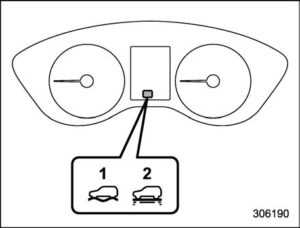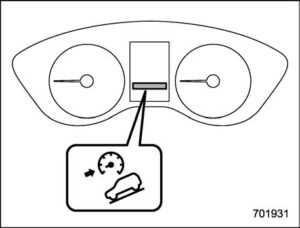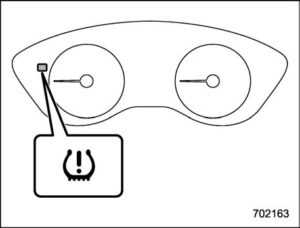Subaru Legacy 2023 Vehicle Dynamics Control System Touring XT
The remarkable vehicle characteristics of the 2023 Subaru Legacy, designed to provide a responsive and enjoyable driving experience, make it stand out. With Subaru’s well-known Symmetrical All-Wheel Drive system, this midsize sedan provides excellent traction and stability under a variety of driving circumstances. It usually has a choice between a powerful turbocharged alternative and a dependable four-cylinder engine under the hood, offering a well-balanced combination of performance and efficiency. The steering and braking systems of the Legacy are designed for exact control and reactivity, and its suspension is expertly adjusted to provide a comfortable ride. The car also has driver-assist systems and cutting-edge safety technologies, which make it a great option for anybody looking for a safe and comfortable driving experience.
2024 Subaru Legacy Specs, Price, Features, Mileage (Brochure)
Vehicle Dynamics Control system
WARNING
Always use the utmost care in driving – overconfidence because you are driving a vehicle with the Vehicle Dynamics Control system could easily lead to a serious accident.
CAUTION
- Even if your vehicle is equipped with the Vehicle Dynamics Control system, winter tires should be used when driving on snow-covered or icy roads; in addition, vehicle speed should be reduced considerably. Simply having a Vehicle Dynamics Control system does not guarantee that the vehicle will be able to avoid accidents in any situation.
- Activation of the Vehicle Dynamics Control system is an indication that the road on which the vehicle is traveling has a slippery surface; since having Vehicle Dynamics Control is no guarantee that full vehicle control will be maintained at all times and under all conditions, its activation should be seen as a sign that the speed of the vehicle should be reduced considerably.
- Whenever suspension components, steering components, or an axle are removed from a vehicle, have an inspection of that system performed by an authorized SUBARU dealer.
- The following precautions should be observed in order to ensure that the Vehicle Dynamics Control system is operating properly:
- All four wheels should be fitted with tires of the same size, type, and brand. Furthermore, the amount of wear should be the same for all four tires.
- Keep the tire pressure at the proper level as shown on the vehicle placard attached to the driver’s side door pillar.
- When replacing a flat tire, use only the specified temporary
- If non-matching tires are used, If non-matching tires are used, spare tires. However, even with the specified temporary spare tire, the effectiveness of the Vehicle Dynamics Control system will be reduced.
- If non-matching tires are used, the Vehicle Dynamics Control system may not operate correctly.
In the event of wheelspin and/or skidding on a slippery road surface and/or during cornering and/or an evasive maneuver, the Vehicle Dynamics Control system adjusts the engine’s output and the wheels’ respective braking forces to help maintain traction and directional control.
- Traction Control Function
The traction control function is designed to prevent the spinning of the driving wheels on slippery road surfaces, thereby helping to maintain traction and directional control. Activation of this function is shown by flashing the Vehicle Dynamics Control operation indicator light. - Skid Suppression Function
The skid suppression function is designed to help maintain directional stability by suppressing the wheels’ tendency to slide sideways during steering operations. Activation of this function is shown by flashing the Vehicle Dynamics Control operation indicator light.
NOTE
-
- The Vehicle Dynamics Control system may be considered normal when the following conditions occur.
- Slight twitching of the brake pedal is felt.
The vehicle or steering wheel shakes to a small degree. - An operating sound from the engine compartment is heard briefly when starting the engine and when driving off after starting the engine.
- The brake pedal seems to jolt when driving off after starting the engine.
- In the circumstances shown in the following list, the vehicle may be less stable than it feels to the driver. The Vehicle Dynamics Control system may therefore operate. Such operation does not indicate a system malfunction.
- On gravel-covered or rutted roads
- On unfinished roads
- When the vehicle is towing a trailer
- When the vehicle is fitted with snow tires or winter tires.
- Activation of the Vehicle Dynamics Control system will cause the operation of the steering wheel to feel slightly different compared to that for normal conditions.
- It is always important to reduce speed when approaching a corner, even if your vehicle is equipped with the Vehicle Dynamics Control system.
- Always turn off the engine before replacing a tire. Failure to do so may render the Vehicle Dynamics Control system unable to operate correctly.
Vehicle Dynamics Control system monitor
To Turn On/Off the Vehicle Dynamics Control System
To turn the Vehicle Dynamics Control on and off, operate the center information display. Creating an adequate driving wheel slip by deactivating the Vehicle Dynamics Control system temporarily may help to escape from the following situations. Turn the Vehicle Dynamics Control system off when necessary.
- A standing start on a steeply sloping road with a snowy, gravel-covered, or otherwise slippery surface
- Extrication of the vehicle when its wheels are stuck in mud or deep snow
- When turning off the Vehicle Dynamics Control system during engine operation, the Vehicle Dynamics Control OFF indicator light on the combination meter illuminates. The Vehicle Dynamics Control system will be deactivated. When “Vehicle Dynamics Control” has been touched again to reactivate the Vehicle Dynamics Control system, the Vehicle Dynamics Control OFF indicator light turns off. You should not deactivate the Vehicle Dynamics Control system except under the above-mentioned situations.
CAUTION
The Vehicle Dynamics Control system helps prevent unstable vehicle motion such as skidding using control of the brakes and engine power. Do not turn off the Vehicle Dynamics Control system unless it is absolutely necessary. If you must turn off the Vehicle Dynamics Control system, drive very carefully based on the road surface condition.
NOTE
- When “Vehicle Dynamics Control” has been touched to deactivate the Vehicle Dynamics Control system, the Vehicle Dynamics Control system automatically reactivates itself the next time the ignition switch is turned to the “LOCK”/“OFF” position and the engine is restarted.
- When “Vehicle Dynamics Control” has been touched to deactivate the Vehicle Dynamics Control system, the vehicle’s running performance is comparable with that of a vehicle that does not have a Vehicle Dynamics Control system. Do not deactivate the Vehicle Dynamics Control system except when absolutely necessary.
- Even when the Vehicle Dynamics Control system is deactivated, components of the brake control system may still activate. When the brake control system is activated, the Vehicle Dynamics Control operation indicator light flashes.
X-MODE (Outback/Subaru Outback Wilderness)
- Always use the utmost care in driving – overconfidence because you are driving a vehicle with X-MODE could easily lead to a serious accident.
- Always use the utmost care in driving – overconfidence because you are driving a vehicle with a hill descent control function could easily lead to a serious accident. Be especially careful, and depress the brake pedal if necessary when driving on extremely steep downhill, frozen, muddy, or sandy roads. Failure to control the vehicle’s speed may cause a loss of control and result in a serious accident.
CAUTION
- Even if your vehicle is equipped with X-MODE, winter tires should be used when driving on snow-covered or icy roads; in addition, vehicle speed should be reduced considerably. Simply having X-MODE does not guarantee that the vehicle will be able to avoid accidents in any situation.
- Activate X-MODE when you encounter a very slippery surface at low speed. However, having X-MODE is no guarantee that full vehicle control will be maintained at all times and under all conditions. When activating X-MODE, the speed of the vehicle should be reduced considerably.
- Whenever suspension components, steering components, or an axle are removed from a vehicle, have the system inspected by an authorized SUBARU dealer.
- Observe the following precautions in order to ensure that X-MODE is operating properly:
- All four wheels should be fitted with tires of the same size, type, and brand. Furthermore, the amount of wear should be the same for all four tires.
- Keep the tire pressure at the proper level as shown on the label attached to the vehicle’s
Vehicle Dynamics Control OFF switch
Vehicle Dynamics Control OFF switch
Press or turn the Vehicle Dynamics Control OFF switch to deactivate the Vehicle Dynamics Control system. Creating adequate driving wheel slip by deactivating the Vehicle Dynamics Control system may help to recover from the loss of traction. Use the Vehicle Dynamics Control OFF switch as necessary.
- A standing start on a steeply sloping road with a snowy, gravel-covered, or otherwise slippery surface
- Extrication of the vehicle when its wheels are stuck in mud or deep snow door pillar.
- Use only the special temporary spare tire to replace a flat tire. With a normal temporary spare tire, the effectiveness of
X- MODE is reduced and this should be taken into account when driving the vehicle in such a condition. - If the hill descent control function has operated continuously for a long time, the temperature of the brake disc may increase and the hill descent control function may be temporarily disabled. In this case, the hill descent control indicator will disappear. When the hill descent control indicator disappears, the hill descent control function is disabled.
- Use only the special temporary spare tire to replace a flat tire. With a normal temporary spare tire, the effectiveness of
X-MODE is the integrated control system of the engine, AWD Vehicle Dynamics Control system, etc. for driving in bad road conditions. Using X-MODE, you can drive more comfortably even in slippery road conditions including uphill and downhill.
X-MODE has the following functions.
- Hill descent control function: Using the hill descent control function, you can keep the vehicle at a consistent speed driving downhill. If the vehicle speed is likely to increase, the brake control system will be activated to adjust the vehicle speed.
- Driving ability control:
This mode increases the hill-climbing ability and driving ability as well as enables smooth application of torque for easier control of the steering wheel.
To Activate/Deactivate X-MODE
X-MODE indicator (models with 1 mode)
X-MODE indicator
X-MODE indicator (models with 2 modes)
- DEEP SNOW/MUD mode indicator
- SNOW/DIRT mode indicator
To activate or deactivate X-MODE operate the center information display.
X-MODE control (models with 1 mode
| Speed range | ||
| Low-speed range (less than 25 mph
(40 km/h)) |
Medium to high-speed range (25 mph
(40 km/h) or higher) |
|
| Outback | X-MODE:
Available |
X-MODE: Not
available*3 |
X-MODE control (models with 2 modes)
| Speed range | ||
| Low-speed range (less than 25 mph
(40 km/h)) |
Medium to high-speed range (25 mph
(40 km/h) or higher) |
|
|
Subaru Outback Wilderness |
DEEP SNOW/MUD: Avail-
able*1*2 |
|
| SNOW/DIRT:
Available |
X-MODE: Not available*4 |
|
|
Outback |
DEEP SNOW/
MUD: Available |
|
| SNOW/DIRT:
Available |
||
- When DEEP SNOW/MUD is operating,
X- MODE is automatically switched to the low-speed range when the vehicle speed is less than 25 mph (40 km/h) and to the high-speed range when the vehicle speed is 25 mph (40 km/h) or more. However, it is not possible to switch to SNOW/DIRT while the vehicle is operating in the high-speed range. If you attempt this, the buzzer sounds twice. - To switch DEEP SNOW/MUD off, operate the center information display.
- If the vehicle speed reaches 25 mph (40 m/h) or more while X-MODE is activated, a buzzer will sound once and X-MODE will be deactivated.
- If the vehicle speed reaches 25 mph (40 km/h) or more while X-MODE is activated, a buzzer will sound once and X-MODE will be deactivated. X-MODE will automatically reactivate when the vehicle speed drops below 22 mph (35 km/h.
NOTE
- Even if you try to activate X-MODE when the vehicle speed is 12 mph (20 km/h) or more, X-MODE will not be activated. At this time, a buzzer will sound twice.
- While the engine is running, if any of the following conditions is met, X-MODE will be deactivated. In this case, it is not possible to activate
- The CHECK ENGINE warning light/malfunction indicator light illuminates.
- The AT OIL TEMP warning light flashes.
- The ABS warning light illuminates.
- The Vehicle Dynamics Control warning light illuminates.
- If the engine could overheat because of a temperature increase of the engine coolant, it may not be possible to activate X-MODE.
- Even while X-MODE is activated, X-MODE will be deactivated when the engine coolant temperature increases.
- The Auto Start-Stop system will be stopped while X-MODE is activated.
Models with 2 modes: - SNOW/DIRT is suitable for driving on a snow-covered road where the points of contact between the tires and road surface are visible, or for driving on an unpaved road.
- DEEP SNOW/MUD is suitable for driving on a road covered with deep snow where the points of contact between the tires and road surface are not visible, or for driving on a muddy road.
- If the vehicle speed reaches 25 mph (40 km/h) or more while X-MODE is activated, a buzzer will sound once and X-MODE will be deactivated. When you use the cruise control after X-MODE is automatically deactivated, X-MODE will not be automatically reactivated when the vehicle speed drops below 22 mph (35 km/h).
Hill Descent Control Function
The hill descent control function will be in standby mode when X-MODE is activated and the vehicle speed is less than approximately 12 mph (20 km/h). The function will operate when the vehicle speed is less than approximately 12 mph (20 km/h) and the accelerator ratio is less than approximately 10%. The function will turn off when the vehicle speed is more than approximately 12 mph (20 km/h) and the accelerator pedal is depressed.
CAUTION
The braking power of the hill descent control function may not be sufficient when strong braking power is needed (e.g., when towing a trailer).
NOTE
- Even while the hill descent control function is operating, you can vary the vehicle speed using the brake pedal or accelerator pedal.
- During braking by the hill descent control function, the stop lights will illuminate.
- The hill descent control function is operable regardless of the gradient of the road.
- The hill descent control function may be considered normal when the following conditions occur.
- An operating sound is heard briefly from the engine compartment while the hill descent control function is operating.
- The sensation of depressing the brake pedal is different, (harder than usual, etc.) when the brake pedal is depressed during hill descent control function operation.
Hill descent control indicator
This indicator appears while the hill descent control function is in standby mode. It flashes while the function is operating. It will disappear when the function is in disabled mode. When this function is changed from operational to non-operational, it will disappear when the vehicle speed reaches more than approximately 18 mph (30 km/h).
Vehicle Dynamics Control OFF indicator light
When the switch is pressed or turned during engine operation, the Vehicle Dynamics Control OFF indicator light “ ” on the combination meter illuminates. The Vehicle Dynamics Control system will be deactivated and the vehicle will behave like a model not equipped with the Vehicle Dynamics Control system. When the switch is pressed again (type A) or turned to the “NORMAL” side (type B) to reactivate the Vehicle Dynamics Control system, the Vehicle Dynamics Control OFF indicator light turns off. With the Vehicle Dynamics Control system deactivated, traction and stability enhancement offered by the Vehicle Dynamics Control system is unavailable. Therefore, you should not deactivate the Vehicle Dynamics Control system except under the above-mentioned situations.
Tire pressure monitoring system (TPMS) (U.S.-spec. models)

Low tire pressure warning light
The tire pressure monitoring system provides the driver with a warning message when tire pressure is severely low. The tire pressure monitoring system will activate only when the vehicle is driven at speeds above 20 mph (32 km/h). Also, this system may not react immediately to a sudden drop in tire pressure (for example, a blow-out caused by running over a sharp object).
WARNING
- If the low tire pressure warning light illuminates while driving, never brake suddenly. Instead, perform the following procedure.
Otherwise, an accident involving serious vehicle damage and serious personal injury could occur.
- Keep driving straight ahead while gradually reducing speed.
- Slowly pull off the road to a safe location.
- Check the pressure for all four tires and adjust the pressure to the COLD tire pressure shown on the tire inflation pressure label. The tire inflation pressure label is located on the door pillar on the driver’s side.
Even when the vehicle is driven a very short distance, the tires get warm and their pressures increase accordingly. The tire pressure monitoring system does not function when the vehicle is stationary. After adjusting the tire pressures, increase the vehicle speed to at least 20 mph (32 km/h) to start the TPMS rechecking of the tire inflation pressures. If the tire pressures are now above the severe low-pressure threshold, the low tire pressure warning light should turn off a few minutes later. If this light still illuminates while driving after adjusting the tire pressure, a tire may have significant damage and a fast leak that causes the tire to lose air rapidly.
If you have a flat tire, replace it with a spare tire as soon as possible.
- When a spare tire is mounted or a wheel rim is replaced without the original pressure sensor/transmitter being transferred, the low tire pressure warning light will illuminate steadily after blinking for approximately one minute. This indicates the TPMS is unable to monitor all four road wheels. Contact your SUBARU dealer as soon as possible for tire and sensor replacement and/or system resetting.
- When a tire is repaired with liquid sealant, the tire pressure warning valve and transmitter may not operate properly. If a liquid sealant is used, contact your nearest SUBARU dealer or another qualified service shop as soon as possible.
Make sure to replace the tire pressure warning valve and transmitter when replacing the tire. You may reuse the wheel if there is no damage to it and if the sealant residue is properly cleaned off. Do not inject any tire liquid or aerosol tire sealant into the tires, as this may cause a malfunction of the tire pressure sensors. If the light illuminates steadily after blinking for app approximately a minute, promptly contact a SUBARU dealer to have the system inspected.
CAUTION
Do not place metal film or any metal parts in the cargo area. This may cause poor reception of the signals from the tire pressure sensors, and the tire pressure monitoring system will not function properly.
FCC ID: CWTD1G141
This device complies with part 15 of the FCC Rules.
Operation is subject to the following two conditions:
- This device may not cause harmful interference, and
- This device must accept any interference received, including interference that may cause undesired operation.
FCC CAUTION
Changes or modifications not expressly approved by the party responsible for compliance could void the user’s authority to operate the equipment.
TPMS Screen

This screen displays each tire pressure.
FAQ
What type of all-wheel-drive system does the 2023 Subaru Legacy use?
The 2023 Subaru Legacy uses Subaru’s Symmetrical All-Wheel Drive system, designed to provide optimal balance and even power distribution for maximum traction and stability.
What engines are available in the 2023 Legacy?
The Legacy offers two engine choices: a 2.5-liter four-cylinder BOXER engine and an optional 2.4-liter turbocharged four-cylinder BOXER engine for higher trims.
How does the Legacy’s suspension contribute to its vehicle dynamics?
The Legacy features a finely tuned suspension system, which balances comfort for long drives with enough stiffness to provide responsive handling and reduce body roll in corners.
What type of transmission does the 2023 Legacy have?
It comes with a Lineartronic CVT (Continuously Variable Transmission) that provides smooth and efficient power delivery.
How does the Legacy’s weight distribution affect its handling?
The Legacy’s weight is distributed to enhance stability and handling, with a design that lowers the center of gravity, aiding in better cornering and overall control.
Does the 2023 Legacy have any driving modes?
Yes, the Legacy offers selectable driving modes that adjust the throttle response and transmission behavior to suit different driving conditions and preferences.
What braking system is used in the 2023 Legacy?
The Legacy is equipped with a four-wheel disc brake system that provides reliable and consistent stopping power, along with features like ABS and brake assist for enhanced safety.
How does the steering system in the Legacy enhance the driving experience?
The Legacy features an electric power-assisted steering system that is tuned for a balance of responsiveness and ease, providing a direct feel with comfortable steering effort.
What role does the vehicle’s aerodynamics play in its performance?
The aerodynamic design of the Legacy reduces wind resistance, enhancing fuel efficiency and contributing to a quieter cabin at high speeds.
How does the Legacy handle in adverse weather conditions?
Thanks to its Symmetrical All-Wheel Drive, the Legacy offers excellent traction and stability in various conditions, including rain, snow, and slippery roads.
What tire options are available for the Legacy, and how do they affect its dynamics?
The Legacy typically comes with all-season tires that provide a good balance of performance in various conditions, with options for different sizes and performance characteristics based on the model.
Is there any specialized technology for stability control in the Legacy?
Yes, the Legacy is equipped with Subaru’s Vehicle Dynamics Control (VDC), which includes stability and traction control systems to maintain vehicle stability.
How does the vehicle’s weight affect its acceleration and braking?
The Legacy’s weight, along with engine choice, influences its acceleration, with the turbocharged option providing a quicker response. The well-engineered braking system ensures effective stopping power despite the vehicle’s weight.
Are there any driver-assist technologies in the Legacy that impact its dynamics?
The Legacy includes driver-assist technologies like adaptive cruise control and lane-keeping assist, which can subtly adjust steering and speed, enhancing both safety and driving dynamics.
What is the turning radius of the 2023 Legacy, and how does it aid in maneuverability?
The Legacy’s turning radius is designed to be tight, aiding in better maneuverability in city driving and when parking.
Useful Link
View Full User Guide: Subaru Legacy 2023 Touring XT User Guide
Download Manuals: https://www.subaru.com/owners/vehicle-resources/manuals.html
2024 Subaru Legacy Specs, Price, Features, Mileage (Brochure)


